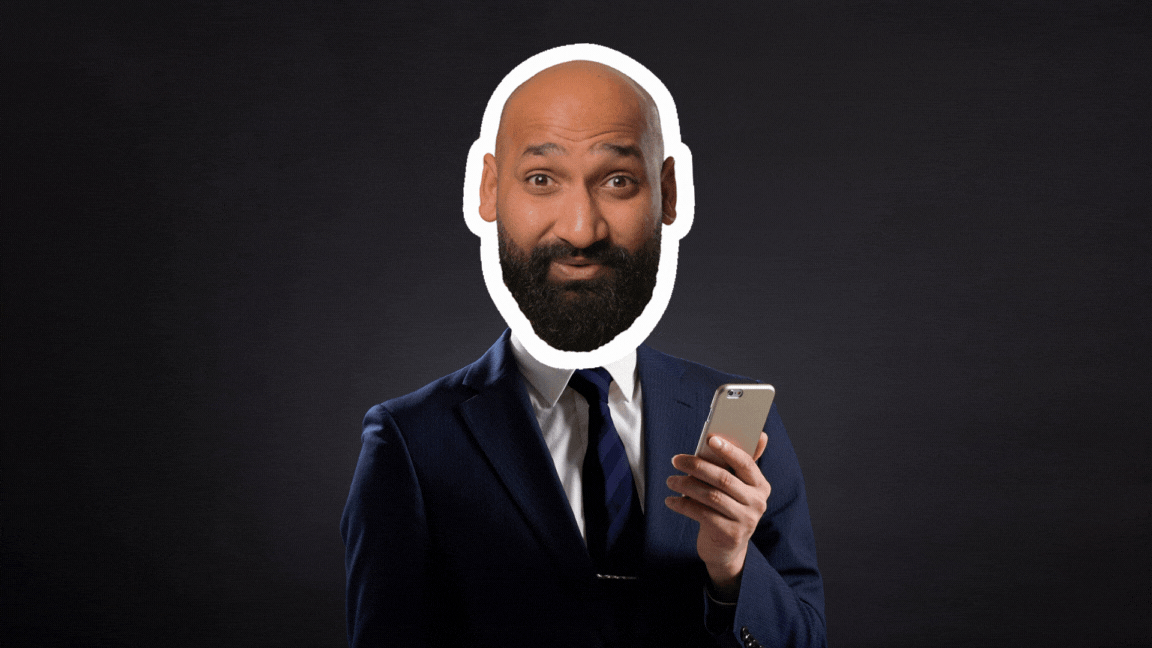In today’s fast-paced business world, every team member, from product managers to tech leads, must think strategically about the brand. Yet many non-creative professionals feel out of their depth when faced with branding decisions. Brand Professor bridges this gap by using interactive, gamified workshops that transform participants’ mindsets. These sessions aren’t just creative play; they’re structured, goal-oriented meetings designed to align cross-functional teams on brand strategy.
As one review explains, Brand Professor’s approach mixes “sharp creativity and compelling storytelling with practical results”. By engaging diverse voices in the process, the workshops ensure that even data-driven roles learn to “think like strategists”, applying brand insights to every decision.
In a Brand Professor workshop, a cross-functional team gathers around a screen and a whiteboard to define brand elements. A brand workshop is “structured, goal-oriented”, using hands-on exercises to make abstract strategy concrete. Brand Professor deliberately keeps groups small (typically 3 to 4 key stakeholders) so all perspectives are heard.
Facilitators then guide participants through fun activities that “elicit thoughts and ideas” and spark creativity. By design, these exercises “pull people out of their comfort zones” and challenge assumptions. In practice, this means a product manager, engineer, and analyst can jointly co-create the brand vision is learning branding fundamentals together rather than working in silos. This collaborative setting helps non-creatives shed their initial skepticism and begin framing problems like strategists, not just executors.
Meet the Personas: Turning PMs, Analysts, and Tech Leads into Brand Advocates
Alex, the Product Manager:
Alex runs feature roadmaps, not marketing campaigns. In his first Brand Professor workshop, he wasn’t sure what to expect; “branding” sounded like a designer’s game. But by Day 2, he was helping craft the company’s customer personas and unique value proposition. Suddenly, Alex saw that defining who the customer is (and why they care) makes prioritizing features much easier.
The workshop taught him to ask “Who is my user really?” before setting metrics, and he learned that product choices should reflect the brand promise. This shift came from the workshop’s emphasis on clarity: once Alex left, “everyone is on the same page and it becomes far easier to make decisions, evaluate opportunities, and prioritize initiatives”.
Jordan, the Business Analyst:
Jordan lives in spreadsheets and data. Initially, a branding workshop felt tangential until she realized brand strategy could give context to her numbers. Through exercises, she helped the team define a strong brand positioning statement.
Now, instead of just measuring campaign clicks, Jordan began analyzing who those clicks belonged to. She used the workshop’s persona outputs (brands often call these “elucidated customer personas”) to re-segment data. The result: reports that tie marketing performance to real customer needs, not assumptions.
As Jordan noticed, knowing the target audience with precision allowed the team to “make product decisions [that] become sharper” and marketing messages more relevant. In other words, she started treating analytics with a storyteller’s eye.
Taylor, the Tech Lead:
Taylor codes backend systems and APIs, with little interest in logos or slogans. Yet Taylor joined a Brand Professor session alongside designers and the CEO. The workshop’s facilitator was careful to educate stakeholders on design principles in plain language.
Through collaborative activities, Taylor saw how technical decisions (like product features or user flow) support the brand narrative. For example, the team created a simple “hero-villain narrative” exercise, and Taylor suggested how the product itself could be the hero’s trusted tool against the villain.
This hands-on involvement showed that every decision, even a line of code, can reflect brand values. Afterward, Taylor often reminded the team of the brand’s tone and voice in technical documents and code comments, ensuring consistency. This empowerment came because the workshop treated Taylor as a strategic partner: “the facilitator’s primary focus” was to make sure “each workshop participant contributes meaningfully”, no matter their background.
Each of these personas describes a common transformation: moving from doubt about branding to actively driving it. The process mirrors what experts say about stakeholder engagement. By involving non-marketing team members early, Brand Professor’s workshops build a shared vision, a core lesson from branding guidance.
As one industry article observes, cross-functional collaboration (when done right) can “get individual departments and teams on the same page” and “enhance decision-making” for the whole organization. In short, even non-creatives emerge feeling ownership of the brand strategy and confident to make brand-aligned choices.
Brand Professor’s Workshop Approach
At the heart of Brand Professor’s method is a blend of storytelling, gamification, and real-world strategy. Founder Sahil “Brand Professor” Gandhi emphasizes practical learning: his site notes that participants will “gain clarity”, “build confidence & skills”, and “drive progress” through the workshop experience.
In practice, this means each session is highly interactive and gamified to keep everyone engaged. For example, teams might play card games to match emotions with brand values or do role-play to test how their brand persona would respond to customer scenarios. These elements turn abstract concepts into memorable experiences.
In a recent collaborative workshop (as described in a press release), Sahil’s co-instructor called the sessions “part workshop, part storytelling masterclass, [part] strategy session”, an approach that goes beyond ordinary training. He and partner Bhavik Sarkhedi promise an experience that is “fresh, fun, and impactful,” designed to make every brand “come alive, feel human, and connect genuinely”.
In short, Brand Professor uses creative formats to demystify strategy. This helps non-creative attendees grasp tough ideas: by framing each concept as a story or game, participants retain more and feel empowered to apply it later.
Behind the scenes, the workshops follow a proven sequence. They often begin with a Brand Discovery phase, where the team clarifies purpose and vision. Participants answer surveys or brainstorm obstacles, tasks aimed at connecting the dots to the “core and fundamental concerns of the business”.
For example, one activity might involve writing down the biggest brand hurdles and then grouping them by theme. This unearths any hidden confusion. The session then moves into identity and positioning: teams define the brand’s values, audience, and voice. (On Day 3, participants tackle market positioning and UVP, per the official agenda.)
Throughout these steps, Brand Professor’s facilitators follow expert recommendations: they keep goals clear, use visual agendas, and record outcomes for later, all best practices cited by experienced strategists.
In sum, the approach is collaborative and structured. As Brand Professor’s website puts it, the goal is to create an “unforgettable and iconic brand” by providing “practical insights” and a “clear path forward”.
Every part of the workshop is tailored to the team’s needs (no cookie-cutter slides), but always geared toward actionable strategy. The combination of entertainment and rigor means non-creatives stay engaged. By the end, they’ve co-created real deliverables, mission statements, personas, and narrative frameworks that guide future decisions.
The Workshop Experience: Hands-on Strategy in Action
In the workshop room (or virtual meeting), theory becomes tangible. Teams use tools like customer empathy maps, brand archetype cards, and visuals to anchor strategy discussions. For example, one exercise might ask participants to choose a fictional “Brand Personality” from cards and justify it.
This prompts debate and forces different viewpoints to mesh. In practice, the Brand Professor facilitator acts as a conductor of these discussions: they ensure quiet voices speak up and powerful personalities listen. Every participant writes down ideas as the session progresses, which encourages active thinking.
Such collaborative exercises are what “pull people out of their comfort zones”. In the image above, attendees are matching words and images to flesh out brand traits, a typical workshop scene.
By designing these activities to be fun yet focused, Brand Professor makes strategic thinking feel natural. Engagement stays high, partly because digital tools are often used (especially in remote workshops), a tip that Toptal notes as key to keeping everyone productive online. With such engagement, even engineers or analysts find themselves laying hands on the strategy-building process, rather than watching from the sidelines.
As the session proceeds, key outcomes start to emerge. Facilitators ensure that by the end, teams have:
Clarity of Vision & Mission:
The workshop forces the group to rewrite vague mission statements into precise, inspiring language. According to Brand Professor, this “clarity pays dividends” across departments because it gives everyone a target to aim at.
After defining the brand’s purpose together, teams comment that “leadership gains alignment, employees gain direction, and stakeholders gain confidence”. With a crystal-clear mission, even technical roadmaps and budgets are aligned to that goal.
Defined Customer Personas:
One session goal is to put names and faces on target markets. Teams analyze who their ideal customers are and give them traits, using data, but also creativity. This outcome is critical, as the Brand Professor blog notes, many businesses fail not from lack of funds or design, but because they “fail to identify their target market and audience.”
By the workshop’s end, product managers and analysts have specific personas in hand. This makes all subsequent decisions more focused: marketing messages are no longer generic, and product features directly address real user needs.
Strategic Roadmap:
Unlike a one-off brainstorming session, the workshop produces a concrete plan. Participants set priority goals and outline an execution plan that connects the brand vision to day-to-day actions.
The blog emphasizes that a workshop’s ultimate value is giving you a strategy, a roadmap telling you “what to do next, when, and in what order”. Teams leave with step-by-step plans, from campaign ideas to customer journey flows. This turns abstract branding talk into actual tasks for marketing, development, and more.
Positioning & Narrative:
A highlight of many Brand Professor workshops is crafting the brand story. Teams articulate their “hero-villain narrative” and voice, effectively scripting how the brand will speak to customers.
One key deliverable is a positioning statement, which Brand Professor notes lets the brand “move from competing on features or pricing to competing on meaning”. With this in hand, every department can ask, “Does this support our narrative?” before launching an initiative. Designers create visual mockups guided by the new story, while sales scripts and social posts all echo the same thematic message.
Each outcome is documented (often digitally) so participants can refer back. The act of co-creating these results means attendees internalize them. As one external source puts it, a facilitator’s job is also to “capture the essence of the discussion” and ensure insights become lasting guidance.
After the workshop, teams have not only a brand bible but also the confidence to use it. In effect, the experience converts non-creatives into brand champions: armed with facts and buy-in, they routinely consider the brand impact of their decisions.
Transforming Decision-Making Across Teams
The real test of these workshops is how they change daily work. The impact becomes clear when decisions get easier. For example, after their Brand Professor workshop:
Product Decisions:
Alex, the PM, began prioritizing features by asking, “Which ones amplify our unique value proposition?” With personas in hand, he cuts through options faster, focusing on features that deliver to the newly defined audience. Instead of guessing, he now refers to the brand positioning (an outcome of the workshop ) to decide what to build next.
Marketing Choices:
Jordan, the analyst, observes that campaigns now directly reflect the brand story she helped create. She aligns A/B test variables with brand voice guidelines, so ad copy is consistent. In meeting after meeting, the clarity of vision from the workshop makes discussions more productive. Brand Professor blog puts it: “It becomes far easier to make decisions, evaluate opportunities, and prioritize initiatives” when there’s shared clarity.
Technical Roadmaps:
Taylor, the tech lead, has also changed. When planning sprints, Taylor thinks about which development tasks best serve the brand promise. Even engineering debates are framed in terms of customer impact (e.g., “How will this feature strengthen our brand in users’ minds?”). Because the brand personality and purpose were co-created, Taylor trusts the creative vision and adjusts infrastructure priorities accordingly.
These changes aren’t just anecdotal. Research backs them up: cross-functional alignment “enhances decision-making and empowers teams”. By breaking down silos and giving non-marketers a voice in strategy, companies find they avoid duplicated work and wasted effort.
Brand Professor’s workshops facilitate this by “getting all team members on board” with a unified brand goal. The result is a smarter, faster way of working: instead of debating values after the fact, everyone already agrees on them.
Moreover, the act of collaborating builds trust. The ClearSpace guide on stakeholder consensus emphasizes that educating non-creatives about design principles and engaging them early can turn skeptics into partners.
In line with that, Brand Professor’s method ensures non-marketing attendees understand why each decision makes sense, not just what branding says. This means future decisions, say, choosing a product name or color scheme, no longer stall.
Teams have already learned common language and reasoning in the workshop, so debates stay grounded. As one conclusion in branding advice states, when stakeholders are fully involved, you achieve “a strong, cohesive brand” and a collaborative process everyone can be proud of. Brand Professor’s transformation-style approach turns that ideal into reality.
From Skepticism to Strategy: A Cultural Shift
Ultimately, Brand Professor’s workshops do more than teach tools; they shift mindsets. Early on, many attendees (especially non-creative ones) come in skeptical: unsure if this is a “waste of time.” But the structured yet creative activities quickly win them over.
The humor and games break down the fear of looking “uncool” for asking about brand imagery. Simultaneously, the clear frameworks (vision, values, personas, etc.) build up their confidence. Afterward, these professionals see themselves as part of the solution, not just foot soldiers. They talk about “speaking the brand’s language” and applying it to projects.
This cultural shift is key. By educating everyone on fundamentals, even showing the psychology of color and storytelling in simple terms, the workshop demystifies creative concepts. For example, an engineer who once shrugged at font choices now understands a bit about emotional tone and why it matters.
Each persona we’ve met ends the story taking initiative on brand-related decisions. The product manager proactively consults marketing before feature planning. The analyst integrates brand metrics into KPIs. The tech lead advocates for user-centric design aligned with the brand personality.
Such changes happen because the workshop makes the brand strategy feel like everyone’s strategy. As academic sources note, this bridging of departments leads to “improved innovation, problem-solving, and quality of work”. And indeed, companies that have undergone Brand Professor’s program report just that, more creativity and cohesion in problem-solving.
Conclusion: Everyone Can Be a Strategist
Brand strategy isn’t just a creative exercise; it’s a mindset that any savvy professional can adopt. By demystifying branding and involving every role in the process, Brand Professor’s workshops turn non-creative team members into strategic thinkers.
They leave not only with a stack of workshop deliverables but with a newfound confidence. Key ideas stay with them: clear vision leads to better focus, defined audiences sharpen decisions, and a unified narrative makes all departments pull in the same direction.
As one branding expert put it, true brand strategy “demands vision, empathy, and the ability to connect with customers”, qualities that go beyond just design skills. Brand Professor helps unlock those abilities in anyone, even those who started as skeptics.
The result? Teams stop treating the brand as a mystery and start using it as a compass. Decisions from design to deployment become more aligned, and companies see that transformative change: a brand no longer hidden in the background, but driving every choice forward.



